When USPS Informed Delivery first came out, it was a revolutionary idea. By signing up for the free service, postal customers could preview their incoming mail before it arrived in their mailboxes. Added later, color business ads and live links allowed mailers to create an additional digital ad channel for immediate response free of charge.
Introduced back in 2014, Informed Delivery usage has grown steadily over time. Where are the numbers today?
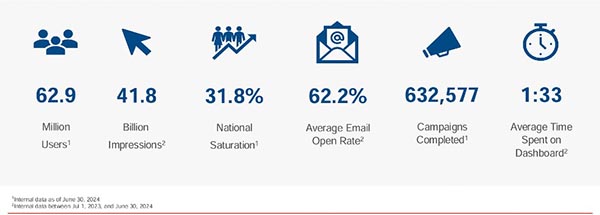
This reflects pretty healthy growth. When we reported on Informed Delivery adoption back in 2021, the number of subscribers was just over 40 million. That’s growth of more than 50% in three years. Household saturation has reached 32%, up from 23% three years ago.
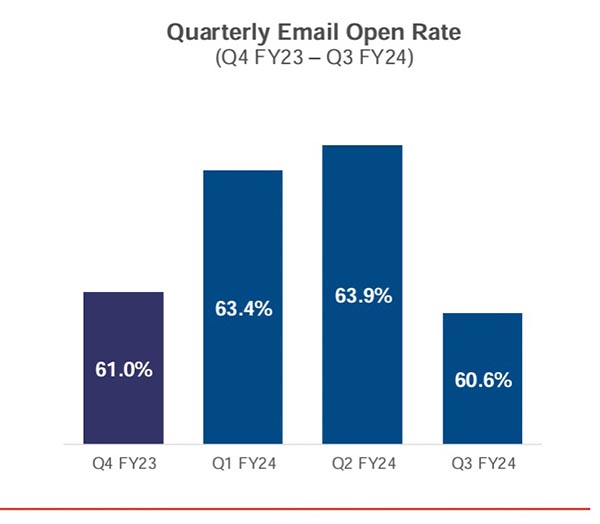
Because we’re all either overly anxious or voyeuristic by nature, it’s not surprising that Informed Delivery has a 62% email open rate (although that’s down slightly from 68% in 2021). Interestingly, open rates were noticeably higher in Q1 and Q2 of 2024 than Q4 of 2023 and Q3 of 2024. Is that because people are more likely to be inside during the cold winter months? Add this to the list of things that make you go hmmmm.
The majority of Informed Delivery users access the service via Daily Digest email, followed by USPS.com, and then the USPS Mobile® App.
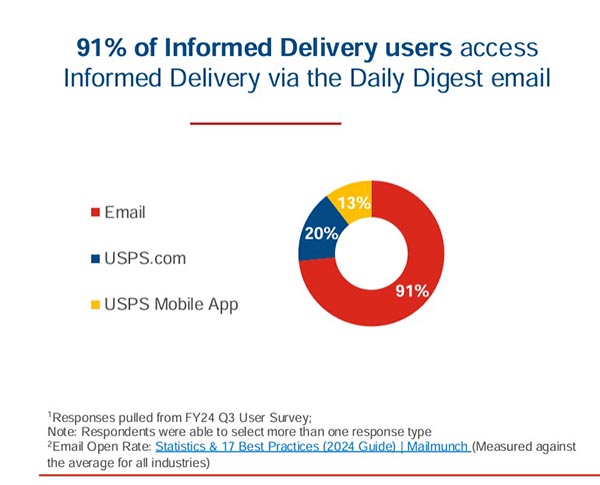
Informed Delivery Digital Ads
Informed Delivery allows businesses to create corresponding digital ads with full-color images and live links. This allows subscribers to respond to ads even before the mail actually arrives. Between July 1, 2023 and June 30 2024, 633,000 of these ad campaigns were deployed.
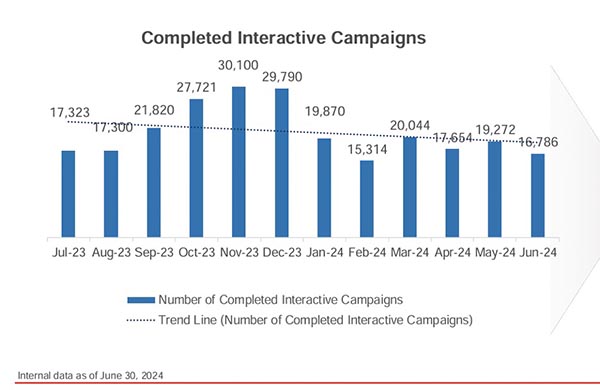
Frankly, we’re surprised this number isn’t higher. With a 62% open rate an average 1.33 minutes spent on the Informed Delivery dashboard, why wouldn’t mailers want an additional touchpoint for free? But to each their own!
Duel Between Dual and Basic
Of the USPS Informed Delivery campaigns sent over the past year, 27% are “dual” campaigns and 63% are basic. A basic Informed Delivery campaign displays the same grayscale scanned image of the mailpiece as the preview, while a dual Informed Delivery campaign allows mailers to replace that grayscale image with a custom, full-color "representative" image. The USPS claims that full-color representative images provide more visual impact and branding potential, and maybe they do (on a non-trackable basis). The click-through rates—.24%—between the two types of campaigns, however, is identical.
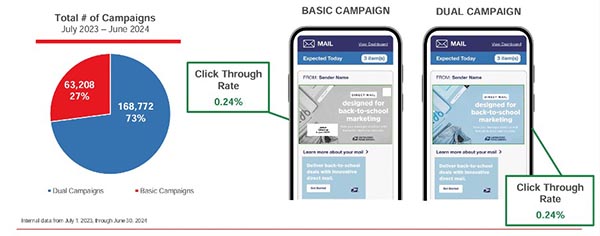
Want to see what your ROI on these campaigns could be? USPS offers an ROI calculator. If you aren’t running Informed Delivery campaigns and are thinking about it, check it out! (Or, if you are already running these campaigns and want to check the USPS’s ROI calculator predictive accuracy.) Click here.
Informed Delivery maintains its high satisfaction rate of 91% (up from 86% in 2021) and 92% would recommend it to others. For those putting high stock in Net Promoter Scores, the USPS has managed to achieve an NPS higher than retail (64), higher than e-commerce (52%), and higher than healthcare (42).
When it comes to the USPS, there has been plenty for the industry to complain about lately. But from these numbers, it does appear that it is doing something right.
Let’s hear it for the USPS! Woo hoo!















Discussion
Only verified members can comment.